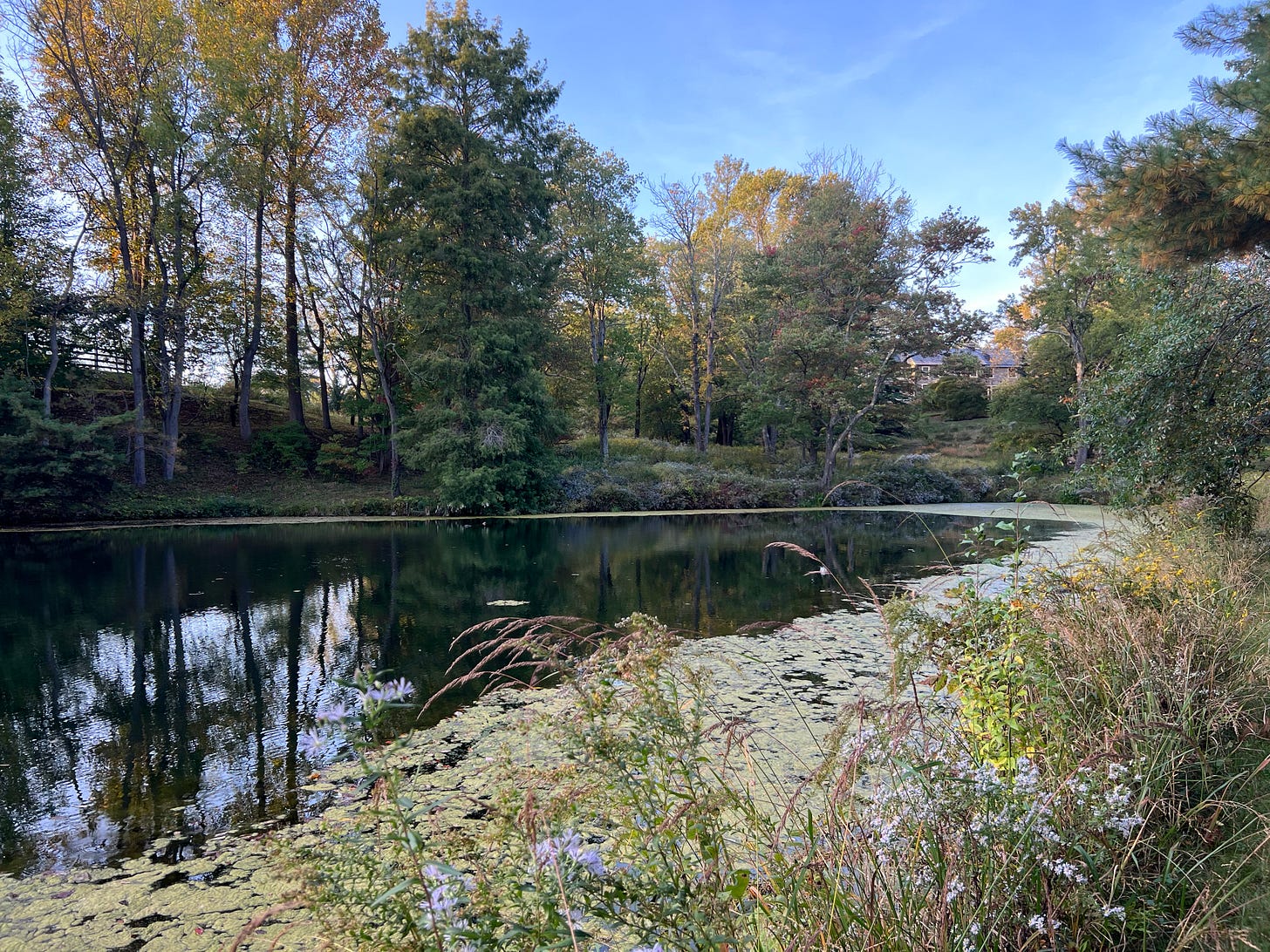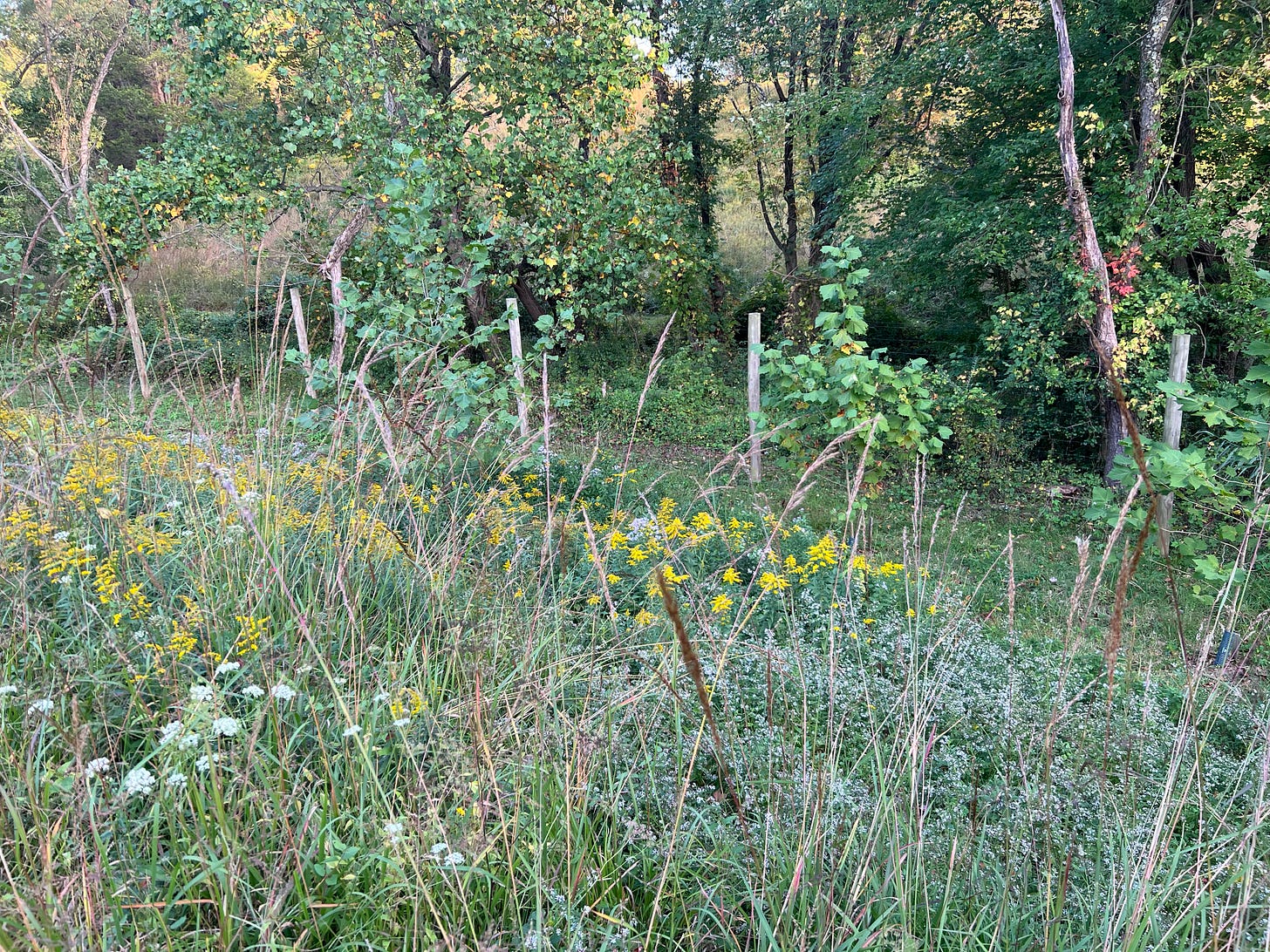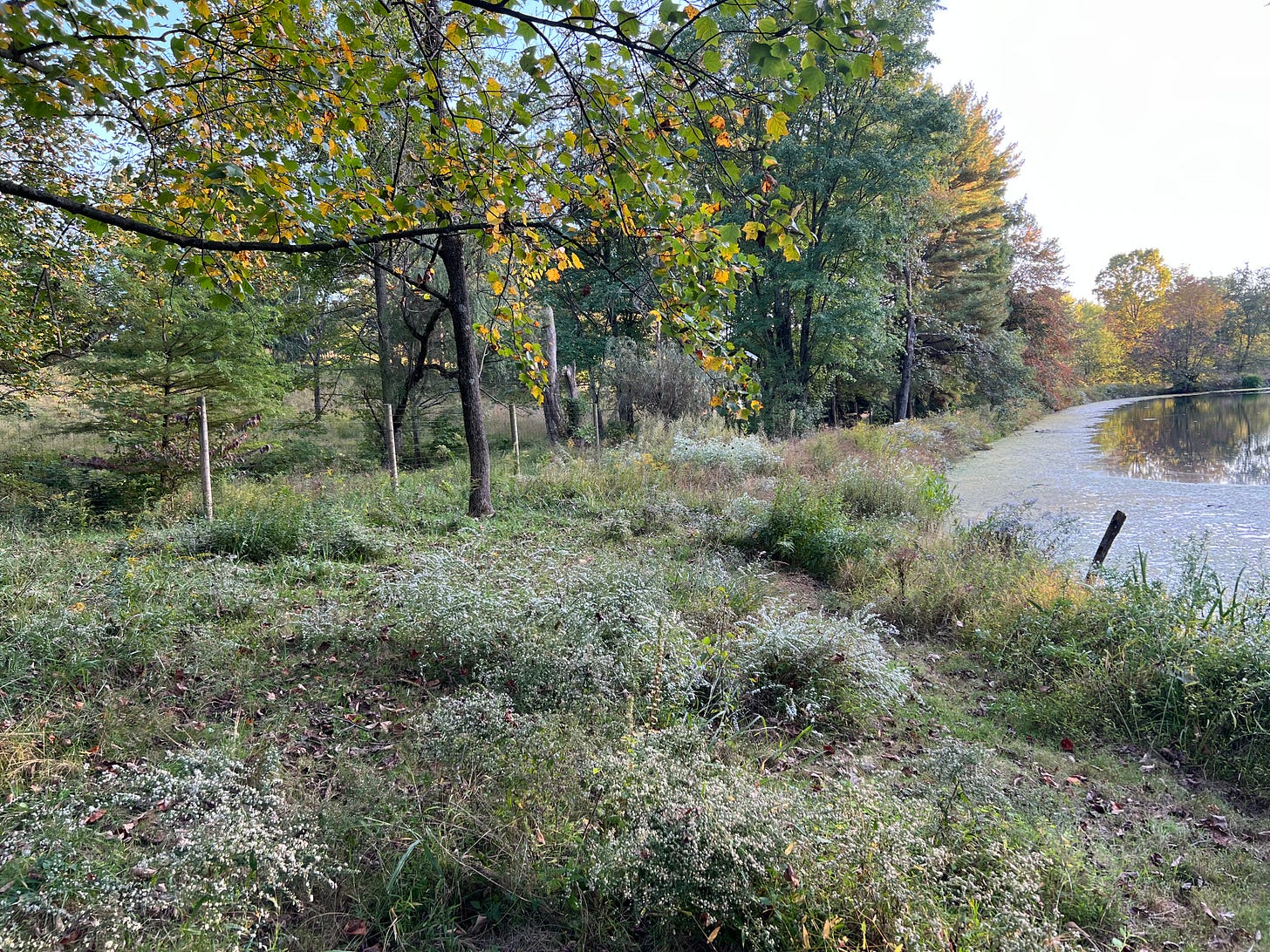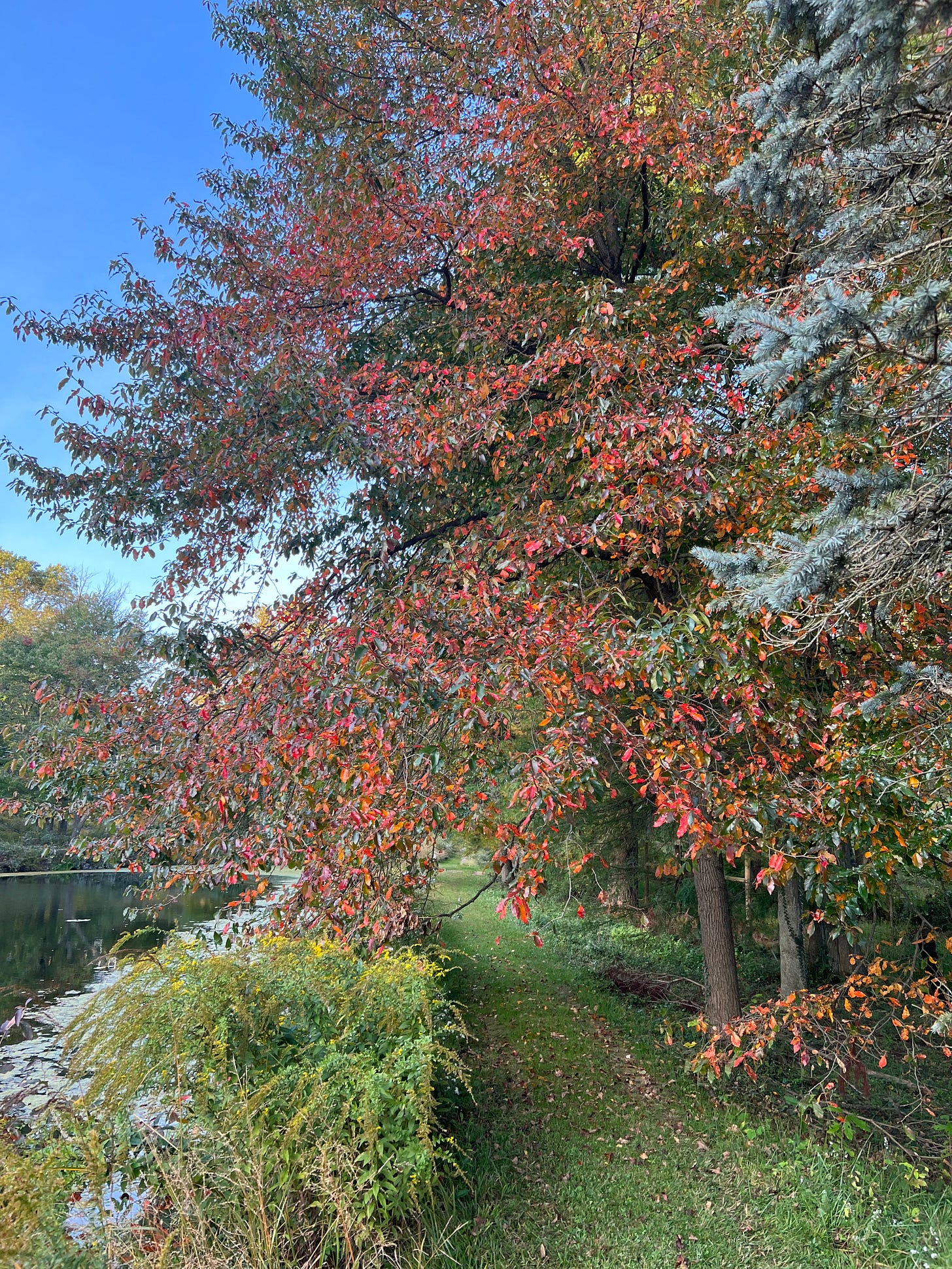I conceived of the clever term “guerrilla gardening” a couple weeks ago while contemplating the subject of this newsletter, only to come across it yesterday while reading an article about the benefits of native landscapes. So I’m not as original as I thought, but I’ll soldier on.
As I’ve now and again touched upon—and any assiduous gardener surely knows—sometimes the biggest obstacle to our goals is the neighbors. In some instances, this means neighborhood HOAs or even zoning laws that can constrain efforts to create naturalistic planting schemes. One recent famous case made the New York Times last year under the punny headline “They Fought the Lawn and the Lawn’s Done.”
Our house in California does have a bossy homeowner’s association, but the overall ethic of the Coachella Valley is now tilting towards xeriscaping to save water, and while this doesn’t necessarily mean everyone has turned into a native-plant purist, the trend is heading in the right direction. Most gardens in our community hide behind high walls in any case, so while we don’t have carte blanche, we are less likely to offend one another’s sensibilities.
Back at Puddock Hill, where we control sixteen acres, you would think neighbors would prove less problematic than in tidy subdivisions, and in some sense you’d be right. But the problem of invasive species is often the problem of uneducated or neglectful neighbors or those who don’t share a backyard steward’s values.
Some years ago, our neighbor across the road had a giant oriental bittersweet vine growing through some rhododendrons in front of his house and into a large conifer and up and up. He generally takes good care of his house, so it astonished me that he would allow this invader to grow three stories high right under his nose. While we do not see it from our house, I had the opportunity to be astonished six times a day coming and going from our driveway.
I contemplated sneaking onto his property at night with my chainsaw, but before indulging in that foolishness, I happened to run into him. We hardly ever see one another, so perhaps providence guided us. After a few pleasantries, I lauded the general care of his front yard and pivoted to my concerns about the bittersweet vine. At first, I thought it fell on deaf ears, but a month later the vine hung dead.
Likely he just didn’t know better, which was confirmed a few years later when he planted a row of pyracanthas, native to Eurasia, to protect his house from the road. I find them hideous. Furthermore, he might have planted native bottlebrush buckeye (Aesculus parviflora), which is highly deer resistant, supportive of bees and butterflies, and would have equally accomplished his goal of acting as a screen. Alas, he didn’t ask me, and now I have to live with these old-fashioned useless non-natives.
But back to guerrilla gardening.
Before we put the property together, we shared a driveway with a neighbor who lived out of state and rented out her house. Her seven-acre parcel was so thick with brush, vines, and invasive trees (notably Bradford pear and autumn olive) that we couldn’t even see the small pond at a hundred paces.
One day, I noticed that this mess included a large bittersweet vine that had overtopped a small tree and directed its grubby tendrils into a stunning old bald cypress tree. I estimated that the bald cypress grew on the property line, but the vine invaded from a mess of brush clearly on the neighbor’s property.
What to do? I might appeal to her, but the general state of neglect did not bode well for the success of that conversation. Sometimes it’s easier to ask forgiveness than to ask permission, as the saying goes. In this case, I didn’t end up having to ask for anything. One quiet day, I waded into that brush with loppers and chainsaw and cut the vine off at the knees, so to speak. (If you knew that bald cypresses have knees, you saw what I just did with that turn of phrase.) No one was ever the wiser, and I saved the tree.
The battle against invasives is the easiest justification for guerrilla gardening. I recently visited a neighbor who was asking advice about how to naturalize her five-acre parcel. The property had two notable features: a dozen or more dead old ash trees that had fallen victim to the emerald ash borer and an equal number of box elders growing together almost in a copse, the latter a rarer sight. In any case, the flat property was mostly lawn with a major helping of woodland edges that had been almost completely overtaken by invasive vines and understory—the usual suspects: bittersweet, multiflora rose, porcelainberry, Japanese honeysuckle, mile-a-minute, and the like. When I asked where the property line lay on one side, the owner got sheepish and admitted that it was well beyond the mow line. But what she’d removed was all invasives, so I found this action completely understandable. She was fighting off encroachment and, additionally, performing a public service.
At Puddock Hill, we are surrounded on three sides by a small development built on land that once went with our house. The township wisely insisted that the developer create a buffer of meadows. Less successfully, no one of authority seems to pay any attention to the maintenance of said meadows, which in many places are overrun with porcelainberry mounding on itself like a series of ominous moguls. There must be a trillion seeds waiting there for birds to eat, soon enough bombarding the township with invasives. To sneak into those erstwhile meadows with chainsaw and loppers, even if I could do it unobserved, would require a battalion of helpers. At this point, solving the problem requires something akin to a napalm drop, so I am doomed to helpless stewing.
Similarly, just beyond the property line below the big pond the same neighborhood has allowed a wetland that once contained lovely native cattails to be overtaken by dreaded common reed (Phragmites australis), which despite string trimming efforts on my side of the property line marches tirelessly up the berm. On my side of the fence, I’ve planted sycamores, bald cypresses, and Atlantic white cedars that I hope one day will outcompete this invader, but what to do about the origin of the problem?
Last week, my answer fell from the sky. The very same bald cypress that I’d saved many moons ago had a mast year. We purchased the property five years ago and expended much money and energy clearing vines and brush, so the tree stands stately, tall and prominent. During an overnight rainstorm last week, a too-lush high branch snapped off and fell to the ground. As I was clearing it from the driveway, I noticed many cones scattered about—hundreds, in fact. I gathered them up. Here they are in a bucket:
Then a guerrilla gardening tactic dawned on me. Soon I will chuck them by the fistful over the fence and into the phragmites wetland, where they will settle into the muck, disintegrate, release their seeds, and birth a native bald cypress forest that will eventually shade out the reeds and restore the natural order.
Or so I imagine. It’s equally likely nothing at all will grow. When you guerrilla garden, you’re always the underdog.
As for the neighboring meadows choked with porcelainberry, I’m thinking of renting a crop duster…
Native asters and goldenrod dominate the landscape around the wet woods and big pond this time of year:
A native sour gum (Nyssa sylvatica) at the woodland edge below the big pond displays fiery fall colors:
A native green frog (Rana clamitans) reposes on a stone ramp in the garden fountain:











